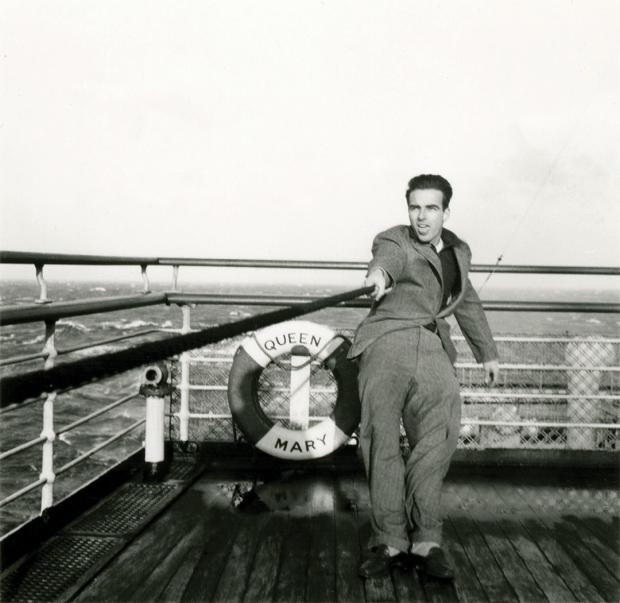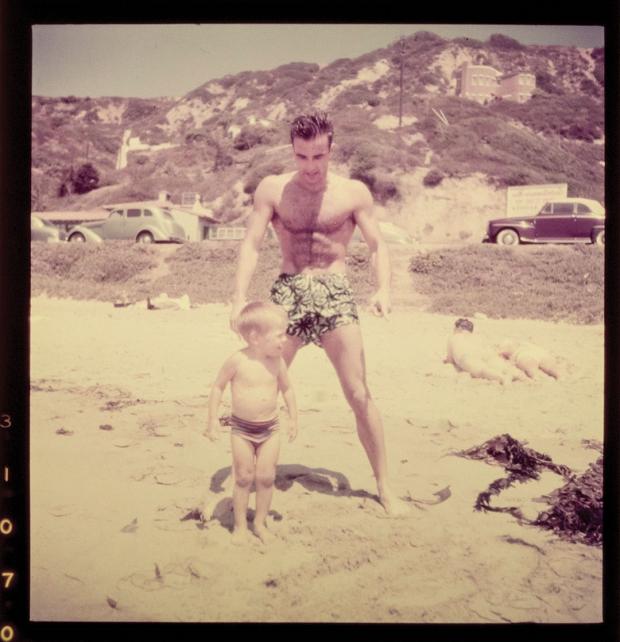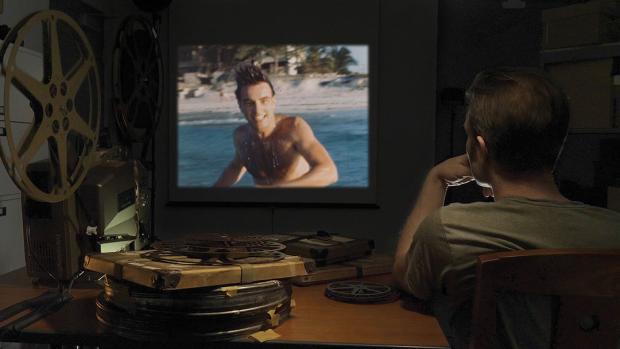Advertisement
Making Montgomery Clift - the four time Oscar nominee for classics such as 1953’s From Here to Eternity - is one of the most singular nonfiction films this movie historian has ever seen. Like many others it is a biopic, but one with a unique take on its reputedly “troubled” subject, who was as renowned for his beauty as for his prodigious talent. Co-directed/co-produced by the actor’s nephew Robert Clift with his wife Hillary Demmon, much of Making is a celluloid refutation of the reputation and version of Clift that has emerged from countless tabloid stories and, in particular, from two tell-all books.
I don’t remember ever seeing a feature-length documentary quite like this intensely personal picture about a film icon made by a relative in order to rehabilitate that artist’s stature. To further compound matters, Robert is a Ph.D. and professor of Film and Media Studies at the University of Pittsburgh, who has a filmmaking background and wrote Making. His mother, Eleanor Clift, is a journalist who news junkies may remember as the sole female voice on PBS’ The McLaughlin Group, battling it out with Pat Buchanan and other mostly male media hounds for airtime.
Robert’s intimate 88 minute chronicle uses clips from his uncle’s movies, most notably 1961’s Judgment at Nuremberg, as well as from newsreel, TV and radio interviews. Most importantly, Robert draws on family lore, especially on his father Brooks Clift’s (Monty’s late older brother) extensive (some may say “obsessive”) archives. This Monty museum includes myriad magazine and newspaper clippings plus reel-to-reel tapes of Clift’s private conversations with Brooks and others. There are also original interviews conducted for this doc, such as with Jack Larson (cub reporter Jimmy Olsen on TV’s 1950s’ Superman series), Montgomery’s biographer Patricia Bosworth and with the obscure James Lorenzo, who would only consent to having his voice recorded.
Robert paints a personal portrait of the elusive uncle who died before he was born. I’m a film historian by trade and read Graham McCann’s great book Rebel Males about Clift, Marlon Brando and James Dean, but learned a lot from Making. Montgomery had an extensive theater background and while still a child was offered - but refused to play - roles by Hollywood, including as the title character in a version of Tom Sawyer.
Intent on preserving his artistic integrity Monty didn’t appear on the silver screen until he was 28, co-starring with John Wayne (whom, Robert said at the ArcLight Hollywood screening, he “hates” for his false, pretentious projections of masculinity) in Howard Hawks’ Western Red River and Fred Zinnemann’s The Search. Just as devoted to protecting his independence, Clift refused to sign binding contracts that would have allowed studios to cast him in roles he preferred not to play. Much to his credit, in his pursuit of aesthetic excellence Clift worked on a picture-by-picture deal.
In his father’s reliquary Robert recovers and discovers Monty’s annotated scripts, which seemingly show that the astute actor, who contractually stipulated that he’d have input into screenplays, rewrote and added dialogue (although he remained uncredited as a screenwriter). In an extensive section on Clift’s heartbreaking scene in Judgment at Nuremberg as a sterilized Jewish Holocaust survivor on the witness stand, Clift’s notes on his actual script are shown in close up. He is also heard discussing the character and text with Nuremberg’s producer/director Stanley Kramer.
This is presented in order to disprove allegations that Clift was so addled by drink and drugs following a devastating car crash that he couldn’t remember his lines. Clift was unsuccessfully sued by director John Huston, contending that the star’s alleged behavior - including forgetting his dialogue - damaged the making of 1962’s biopic about the founder of psychoanalysis, Freud. Although Clift won, the lawsuit harmed his reputation and after this Freudian slip only went on to make a single additional movie, The Defector in 1966, the year he prematurely died at age 45.
Much of Robert’s film deals with the private side of his movie star uncle and aims at countering the narrative supposedly spun by the twin biographies authored by Robert LaGuardia and Bosworth which, along with myriad tabloid rumors reported as “news,” depicted Clift as a man “tortured” by his same sex attraction. The film posits that Monty was not homosexual per se but, rather, had sexual relationships with members of both genders. The film suggests that the actor had sex with Elizabeth Taylor and Marilyn Monroe, his co-stars in 1951’s A Place in the Sun by George Stevens (his son, BTW, made an excellent documentary about his director dad) and 1961’s The Misfits, written by Arthur Miller and helmed by Huston. Ironically, Making premiered at the La Film Festival on “Bisexual Visibility Day,” although on the red carpet in ArcLight Hollywood’s courtyard Robert said this copacetic occurrence was by chance, not design.
The documentary doesn’t deny that Monty had sex with males but vigorously disputes accounts that suggested he did so with underaged boys, taking great umbrage at allegations of pederasty. It also seems to argue that others may have been troubled by Clift’s bisexuality, but not Monty himself, who accepted his duality as a sexual preference - rather than rejected his same sex proclivities and was “tortured” by them, hence turning towards substance abuse.
In original footage Larson discusses being kissed by Clift, although as with much else in this doc, much is left unsaid. Did Montgomery and Larson have an affair? Exactly who is the African American caretaker James Lorenzo, who is alternately described by various sources as a personal secretary and nurse for Clift who was with him when he died? What exactly was the nature of his relationship with Monty? And how much did drink and drugs take their toll on the soul and body of this screen genius whose brilliant acting style McCann indicates in Rebel Males “photographs thoughts”?
Making Montgomery Clift has a special place in our era of purported “fake news” and “alternative facts.” On the one hand, relatives will have memories, memorabilia and the like available and accessible to family members that can give them an insider edge on depicting their loved one. But in doing so, in trying to set the record “straight” - as they see it - they are more likely to be subjective and less dispassionate than impartial, neutral filmmakers and journalists. Having said that, this is a fascinating cinematic study of its subject and a well made film worth seeing by fans of acting, LGBTQ issues, Montgomery, movie history - and The McLaughlin Group.
For more info see: www.LAFilmfest.com.
L.A.-based film historian/critic Ed Rampell is co-author/author of four movie film history books, including “The Hawaii Movie and Television Book” (see: https://mutualpublishing.com/product/the-hawaii-movie-and-television-book/ ). At 7:00 p.m., Sept. 27 Rampell is co-presenting a screening of Neruda and a poetry reading to commemorate the 45th anniversary of the Pinocht coup in Chile.



